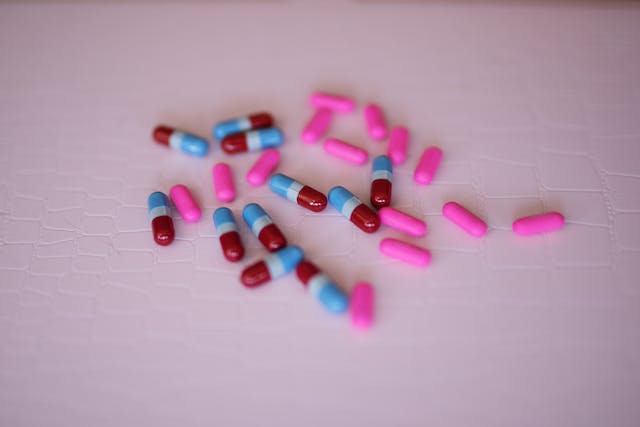Road To Recovery: Exploring Effective Opioid Addiction Treatment Methods
Opioid addiction represents a critical challenge that transcends personal struggles, affecting families and communities across the globe. With its roots entwined in both prescribed medication and illicit substance use, the complexity of this issue demands a multifaceted response. The consequences extend beyond individual health, impacting societal structures and economic stability.
As we delve into the nuances of effective treatment methods, it’s imperative to understand the depth and breadth of opioid addiction’s reach, and the urgent need for accessible, comprehensive solutions.
Understanding Opioid Addiction
Opioids, encompassing a broad range of substances from doctor-prescribed medications like oxycodone and morphine to illegal narcotics such as heroin, possess potent pain-relieving properties. Their use, even when medically supervised, can lead to dependence due to the way they interact with the brain, altering pain perception and often inducing feelings of euphoria.
The risk escalates with prolonged use or misuse, including taking higher doses than prescribed or using these drugs without a prescription. The transition from legitimate use to addiction can be insidious, with individuals gradually increasing their dosage as tolerance develops, potentially leading down a path to illicit opioid use to sustain their dependency.

The Scope Of The Opioid Crisis
The opioid crisis has escalated into a public health emergency, with staggering statistics underscoring its severity. Across communities, the rise in opioid misuse encompasses both prescribed medications like oxycodone and illicit drugs such as heroin and fentanyl, leading to an alarming increase in addiction and overdose deaths. This situation has indiscriminately impacted urban centers and rural areas alike, cutting across demographic lines and exposing systemic vulnerabilities in healthcare, law enforcement, and social support systems.
The data not only reflects the human cost in terms of lives lost and families affected but also highlights the economic burden on public health and emergency services. Efforts to address the crisis involve a multifaceted approach, including policy reform, education, and enhanced treatment programs, underscoring the critical need for coordinated action to stem the tide of this public health challenge.
Signs And Symptoms Of Opioid Addiction
Understanding the signs and symptoms of opioid addiction is vital for early detection and intervention. Each symptom signifies the physical grip of addiction and the profound impact it has on an individual’s life and well-being:
- Increased tolerance involves needing higher doses to feel the same effects, indicating the body’s adaptation to the drug.
- Withdrawal symptoms can range from flu-like physical discomfort to intense cravings, highlighting the body’s dependence on opioids.
- Loss of control is evident when individuals consume opioids in larger amounts or for longer periods than they intended, despite wanting to cut down or stop.
- Neglect of responsibilities becomes apparent as individuals prioritize drug use over their obligations at work, school, or home.
- Social withdrawal is a shift away from friends and family, often accompanied by a loss of interest in previously enjoyed activities.
- Risky use includes using opioids in dangerous situations or continuing use despite clear harm, underscoring the compulsive nature of addiction.
- Continued use despite problems persists with opioid use even when it’s causing health, social, or legal issues, demonstrating the overpowering nature of addiction.
Recognizing these signs and symptoms can lead to the necessary support and treatment, paving the way for recovery and healing. For those observing these signs in themselves or loved ones, seeking professional advice is a critical next step. For comprehensive resources and support options, visit jacksonhouserehab.com, a valuable tool in navigating the path to recovery.
The Physiology Of Opioid Dependence
When opioids are used over a long period, the brain undergoes significant changes. These substances mimic natural neurotransmitters, disrupting pain signals and enhancing feelings of pleasure. Over time, the brain’s chemistry and circuitry adapt, necessitating more of the drug to achieve the same effect, a phenomenon known as tolerance.
The physiological dependence is marked by the brain’s reliance on opioids to function normally, leading to withdrawal symptoms when usage ceases. The complexity of these changes underscores the challenge of overcoming opioid dependence, highlighting the need for professional guidance and support in the recovery process.
Challenges In Overcoming Opioid Addiction
Overcoming opioid addiction is fraught with hurdles that can make the path to recovery challenging:
- Physical Withdrawal Symptoms
These symptoms can range from intense discomfort, such as severe pain and nausea, to emotional fluctuations like extreme mood swings. The severity of these symptoms can make the early stages of recovery daunting, as individuals must navigate both the physical and psychological aspects of withdrawal. This period is critical and requires appropriate medical support to manage symptoms effectively and minimize discomfort.
- Psychological Cravings
After managing physical dependence, individuals often face psychological cravings, which can be intense and unexpected. These cravings are driven by the brain’s memory of the drug’s pleasurable effects, creating a strong desire to experience those feelings again. This mental aspect of addiction can persist for months or even years after stopping drug use, making long-term recovery challenging and increasing the risk of relapse.
- Emotional And Mental Health Issues
Emotional and mental health issues such as depression and anxiety often intertwine with opioid addiction, presenting additional layers of complexity to recovery efforts. These conditions can both precede and be exacerbated by substance abuse, creating a cycle that complicates the path to sobriety. Addressing these co-occurring disorders is crucial for a holistic recovery approach, as untreated mental health issues can undermine addiction treatment.
- Environmental Triggers
These triggers can include specific locations, social groups, or even certain times of the day that were previously associated with drug use. When an individual encounters these triggers, it can reignite cravings for opioids, challenging their resolve and potentially leading to relapse. Managing these triggers often requires changes in lifestyle, such as avoiding certain places or people, and developing new, healthy habits to replace old ones.
- Social Stigma
The stigma linked to addiction often leads to feelings of shame and isolation, making it tough for individuals to seek the help they need. Misunderstandings and judgments from society can intensify these feelings, creating barriers to accessing support. It’s essential to challenge these stigmas to create a more supportive environment for recovery.
Navigating these challenges requires a strong support system and professional guidance. Recovery is a journey, and each step forward, no matter how small, is a victory in the fight against addiction.

Detoxification: The First Step To Recovery
Detoxification serves as the crucial initial step in the pathway to recovery, aiming to rid the body of opioids in a controlled, medically supervised environment. This phase is vital for mitigating withdrawal symptoms, which can range from mild to severe, ensuring a safer transition toward a substance-free state.
Beyond physical stabilization, detox sets the groundwork for deeper therapeutic work, addressing psychological dependencies and preparing individuals for the next stages of recovery. It’s tailored to fit each person’s unique situation, considering factors like the duration of addiction and overall health. The integration of detox with subsequent treatment phases underscores its importance in the broader recovery strategy.
Medication-Assisted Treatment (MAT)
MAT for opioid addiction incorporates specific medications to alleviate withdrawal symptoms, reduce cravings, and lower the potential for misuse.
- Methadone is administered under controlled conditions, usually at specialized clinics, and works by occupying the brain’s opioid receptors without the euphoria, thereby easing withdrawal and cravings.
- Buprenorphine, available through prescription, binds to the same receptors with a limited effect, reducing the risk of dependency and overdose.
- Naltrexone, taken orally or as a monthly injection, blocks opioid receptors, preventing any opioid drug’s effect.
This comprehensive pharmacological strategy is most effective when combined with counseling, offering a dual approach to tackle both physical dependence and the psychological aspects of addiction
Behavioral Therapies In Addiction Treatment
Behavioral therapies target the psychological dimensions of addiction.
- Cognitive Behavioral Therapy (CBT) operates on the principle that learning processes play a critical role in the development of maladaptive behavior patterns like substance abuse. CBT involves identifying triggers, developing coping strategies, and changing thought patterns to reduce the likelihood of relapse.
- Motivational Interviewing (MI) is a client-centered approach that addresses ambivalence about change, enhancing the individual’s motivation to alter harmful behaviors. By focusing on the individual’s intrinsic motivation and values, MI encourages commitment to a treatment plan.
These therapies are adaptable, can be tailored to individual needs, and are applicable in both individual and group settings, making them versatile tools in addiction treatment.
Holistic And Alternative Treatment Approaches
Holistic and alternative treatment approaches like acupuncture, yoga, and meditation offer a refreshing complement to conventional addiction therapies.
- Acupuncture
Acupuncture, deeply rooted in traditional Chinese medicine, strategically inserts needles at specific points on the body. This technique aims to restore balance and flow within the body’s energy pathways, offering relief from withdrawal symptoms and fostering emotional equilibrium. By targeting these key points, acupuncture can help reduce cravings, ease anxiety, and improve overall well-being, making it a supportive element in the holistic recovery process.
- Yoga
Yoga integrates physical postures, controlled breathing, and meditation to enhance well-being. This ancient practice strengthens the body, clarifies the mind, and stabilizes emotions, offering a sanctuary for those navigating the tumultuous waters of recovery. Through its holistic approach, yoga encourages self-awareness, resilience, and a sense of inner calm, essential qualities for individuals on the path to overcoming addiction.
- Meditation
Meditation cultivates mindfulness, guiding individuals to observe their thoughts and emotions without judgment. This practice reduces stress and enhances self-awareness, empowering individuals to understand and transform their behavioral patterns. Through regular meditation, one can achieve a deeper sense of peace and resilience, essential components for a successful recovery journey.
These methods, by addressing the mind-body-spirit connection, provide valuable tools for those seeking a comprehensive recovery path.
The Role Of Support Systems In Recovery
Support systems play a pivotal role in the recovery journey, offering a foundation of emotional and practical support. Family and friends provide a network of care and understanding, vital for navigating the challenges of rehabilitation. Their encouragement can boost morale and foster a sense of belonging, which is critical during vulnerable moments.
Support groups create a community of individuals with shared experiences. These groups offer a platform for exchanging stories, strategies, and encouragement, reinforcing the notion that one is not alone in their struggle. This sense of camaraderie can be incredibly empowering, offering new perspectives and coping mechanisms.
Engaging with these support systems requires openness and communication. Actively participating in group meetings, maintaining honest dialogues with loved ones, and seeking mutual support can significantly enhance the recovery experience. These relationships build a safety net that can catch individuals if they stumble, providing both comfort and accountability.

Relapse Prevention Strategies
Relapse prevention is a crucial aspect of sustainable recovery, emphasizing the importance of recognizing and managing triggers. The first step involves identifying specific situations, emotions, or people that may provoke cravings. By understanding these triggers, individuals can develop tailored strategies to cope with them effectively.
Creating a robust coping mechanism involves both behavioral and mental strategies, such as engaging in physical activity, practicing mindfulness, or seeking support from trusted individuals or groups. These activities divert attention from cravings and also contribute to overall well-being.
Finally, maintaining a proactive stance toward recovery, with regular self-reflection and adaptation of strategies, ensures resilience against relapse. Continuously evolving coping mechanisms in response to new challenges reinforce an individual’s commitment to recovery and personal growth.
Policy And Community Initiatives
Public policy and community programs play a significant role in supporting addiction recovery and preventing opioid misuse. These initiatives can include funding for treatment centers, educational campaigns to raise awareness about the dangers of opioid addiction, and support for research into more effective treatment methods.
Community-based programs might offer outreach services, support groups, and resources for individuals and families affected by addiction, fostering a supportive environment for recovery. Together, these efforts aim to address the root causes of addiction, provide accessible treatment options, and promote a healthier, more informed society.
Conclusion
The road to recovery from opioid addiction encompasses a range of effective treatment methods, from Medication-Assisted Treatment and behavioral therapies to holistic approaches and the vital support of a strong network. Each plays a crucial role in addressing the multifaceted nature of addiction, offering hope and a path forward for those affected.
By understanding and leveraging these diverse strategies, individuals can find the tools and support necessary for a successful journey toward recovery and long-term well-being.

